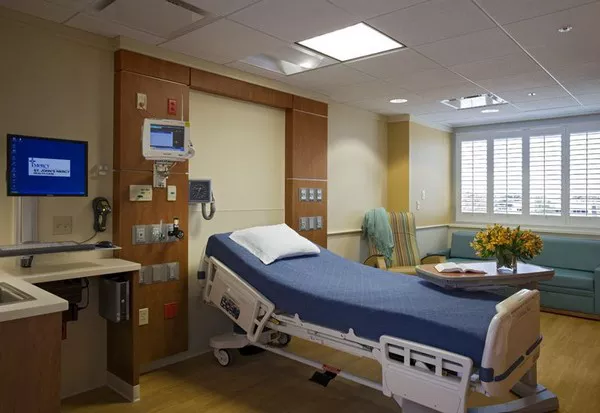Orthostatic hypotension, also known as postural hypotension, is a condition characterized by a sudden drop in blood pressure when a person stands up from sitting or lying down. This drop in blood pressure can lead to symptoms such as dizziness, lightheadedness, blurry vision, and in severe cases, fainting.
Symptoms:
Common symptoms of orthostatic hypotension include:
Dizziness or lightheadedness upon standing up.
Blurry vision or seeing spots.
Feeling faint or actually fainting.
Nausea.
Fatigue.
Headaches.
Causes:
There are several potential causes of orthostatic hypotension, including:
Dehydration: Not drinking enough fluids can cause a decrease in blood volume, leading to a drop in blood pressure.
Medication side effects: Certain medications, such as those used to treat high blood pressure, Parkinson’s disease, or depression, can cause orthostatic hypotension as a side effect.
Underlying medical conditions: Conditions such as Parkinson’s disease, diabetes, heart problems, and nervous system disorders can affect the body’s ability to regulate blood pressure.
Aging: Blood vessels may become less flexible with age, making older adults more susceptible to orthostatic hypotension.
Prolonged bed rest: Remaining in bed for extended periods can lead to decreased blood volume and muscle tone, contributing to orthostatic hypotension.
Risk Factors:
Individuals who may be more susceptible to orthostatic hypotension include:
Older adults, particularly those over the age of 65.
People with certain medical conditions such as Parkinson’s disease, diabetes, or heart conditions.
Individuals taking medications that affect blood pressure, such as diuretics, beta-blockers, or antidepressants.
Treatment Options:
Lifestyle changes:
Hydration: Adequate hydration is essential for maintaining blood volume and preventing orthostatic hypotension. It’s recommended to drink plenty of fluids throughout the day, especially when experiencing symptoms or in hot weather.
Dietary modifications: Increasing salt intake (under the guidance of a healthcare provider), consuming smaller, more frequent meals, and limiting alcohol and caffeine can help stabilize blood pressure.
Physical activity: Engaging in regular exercise, particularly activities that improve circulation and muscle tone, such as leg exercises and isometric exercises, can help prevent orthostatic hypotension.
Compression stockings: These special stockings can help improve blood flow by preventing blood from pooling in the legs.
Avoiding triggers:
Identifying and avoiding triggers that can worsen orthostatic hypotension, such as prolonged standing, hot showers, or sudden position changes, can help manage symptoms.
Medical interventions:
Medications: In some cases, doctors may prescribe medications to help manage orthostatic hypotension. These may include fludrocortisone, which helps increase blood volume, midodrine, which constricts blood vessels, or droxidopa, which increases blood pressure by affecting certain neurotransmitters.
Treating underlying causes: If orthostatic hypotension is caused by an underlying medical condition, such as Parkinson’s disease or diabetes, treating the underlying condition is essential for managing symptoms.
Consultation and Monitoring:
It’s important for individuals experiencing symptoms of orthostatic hypotension to seek medical advice for proper diagnosis and treatment. Regular monitoring of blood pressure, both at home and during medical appointments, can help track changes and adjust treatment plans accordingly. Follow-up appointments with healthcare providers are crucial for assessing treatment effectiveness and making any necessary adjustments.
Additional Tips and Resources:
Fall prevention strategies: Taking steps to prevent falls, such as using assistive devices like canes or walkers, installing handrails, and removing hazards from the home environment, can help reduce the risk of injury associated with orthostatic hypotension.
Support groups and communities: Connecting with others who are experiencing similar challenges can provide valuable support and resources. Online support groups or local community organizations may offer opportunities for education, encouragement, and camaraderie.
Reliable sources: Reputable medical websites and organizations, such as the National Institutes of Health (NIH) or the American Heart Association (AHA), can provide reliable information on orthostatic hypotension, including symptoms, causes, and treatment options.
Conclusion
In conclusion, orthostatic hypotension is a common condition characterized by a sudden drop in blood pressure upon standing up. While it can be concerning, especially for older adults or those with underlying health conditions, there are effective treatment options available. Lifestyle changes, medical interventions, and regular monitoring are key components of managing orthostatic hypotension and improving quality of life. Seeking medical advice and utilizing resources for support and education can help individuals better understand and cope with this condition.
FAQs
Can orthostatic hypotension go away?
Yes, orthostatic hypotension can go away in some cases. It may resolve on its own or improve with lifestyle changes, such as increasing fluid intake, wearing compression stockings, and avoiding triggers like alcohol and certain medications.
What is the first-line treatment for orthostatic hypotension?
The first-line treatment for orthostatic hypotension typically involves non-pharmacological measures such as increasing salt and fluid intake, wearing compression garments, and gradually changing positions to prevent sudden drops in blood pressure. These lifestyle modifications are often effective in managing symptoms.
What are 3 reasons a person could have orthostatic hypotension?
Orthostatic hypotension can occur due to dehydration, prolonged bed rest or immobility, and certain medical conditions such as Parkinson’s disease, diabetes, or disorders of the autonomic nervous system. Medications like antihypertensives or diuretics can also contribute to orthostatic hypotension.
Related topics:
- Mycoplasma Bacterial Infection: Causes & Prevention
- The Maze of MDD: Understanding Duration, Treatment & Recovery
- Understanding Seborrheic Dermatitis: Causes & Treatment


